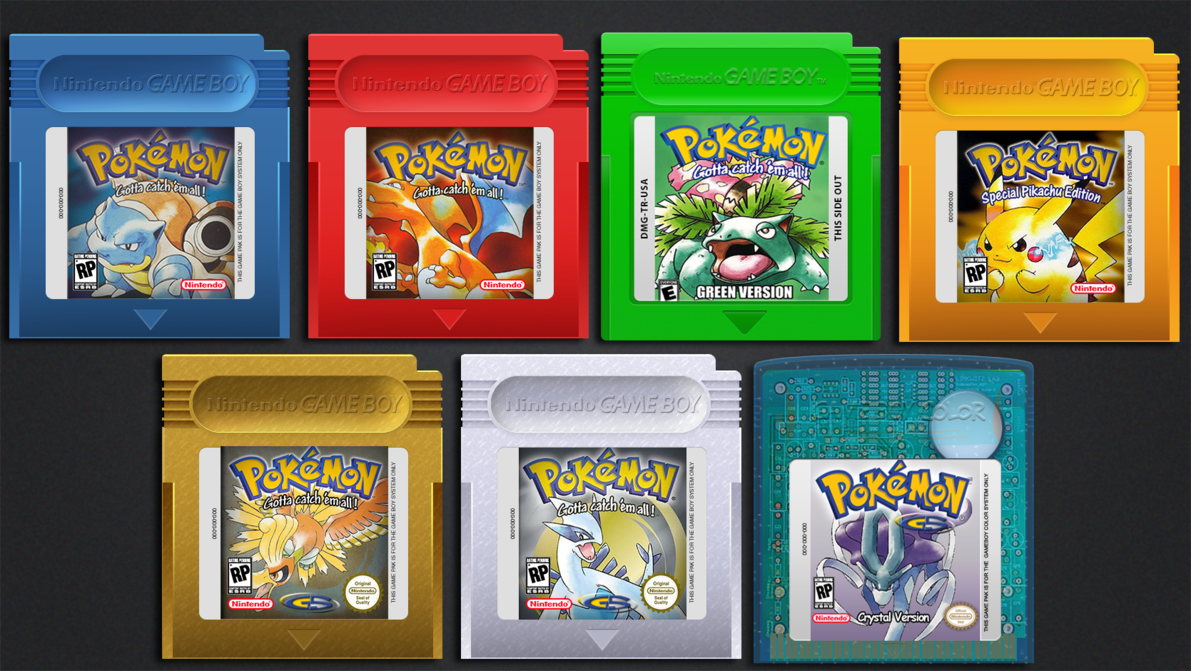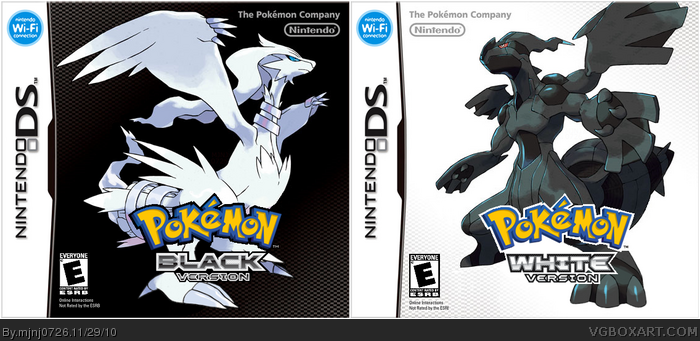
PokeMonth: Ranking the Generations, From Worst to Best
Happy PokeMonth, everyone!
The franchise that has grown and changed as we have is turning 20 years old this month, and I’m celebrating by spamming Pearson’s Place with as many Pokemon-related posts that I can think of…and have time to write, obviously.
Today, I’m taking on a task that is sure to ruffle a few feathers: ranking the 6 generations of Pokemon, from best to worst.
Now, before I begin, I need to establish a few ground rules:
- Main games only. Any sort of spin-off (i.e. Mystery Dungeon) or remake (Fire Red/Leaf Green) do not count.
- That being said, third games (Crystal, Emerald) do count, because they’re mostly minor expansions on the games that preceded.
- Nostalgia factor is minimal. I don’t care if a game was my first, last, middle, or anything else. Accounting for nostalgia would surely turn this list into more of a hot mess than it already is, so I was as objective as possible while putting it together.
- Generations will be ranked on what they brought to Pokemon relative to how the current state of the franchise was at the time of its release–> in other words, I’m not going to penalize Gen 1 for not having double battles.
Alrighty. With that out of the way, let’s get to it!
6. Generation VI: X, Y, and Z

Sure: it was great to see a mobile Pokemon game in full 3D, and Mega Evolutions gave some old fan favorites a return to relevance.
The introduction of the Fairy type is hit-or-miss, depending on who you ask. Some liked how Fairies helped dethrone the Dragon type that had ruled the metagame since….ever, while others complained that all the creators did to neutralize an unfair type was introduce another that was just as overpowered.
But Gen VI dug its own grave in the minds of Poke-faithful by giving us an experience that was simply too easy.
Certain additions including an exp. share that spread across your entire team, EV training that didn’t require grinding, and woefully under-leveled Gym Leaders culminated in a Generation that was just as disrespectful as it was forgettable.
5. Generation III: Ruby, Sapphire, and Emerald

Aw yes. I can feel the searing hatred now.
I know, I know. Gen III means a lot to a lot of people. Most of which point to these games as their very first contact with the Pocket Monsters franchise. I get that.
But there was always something…off about RSE.
Maybe it was the complete lack of compatibility with previous games, rendering all the hard work you put in Gens I & II completely useless.
Or, it could have been mind-numbingly repetitive music that just won’t leave your head—and not in the good way.
OR, it was the ridiculous amount of HM-dependent back tracking that the story required.
Contests, annoying weather effects, and the need to switch between the Mach and Acro bike are just a few of the many frustrations produced by Gen III.
I could go on for days, but I’m afraid of pissing any more people off.
Granted, Gen III fixed a lot of the aforementioned problems with Fire Red and Leaf Green, but this is a list of main games only, so RSE takes a tumble.
4. Generation IV: Diamond, Pearl, and Platinum

I consider Generation IV as “The Gen that saved Pokemon”.
Popularity of the franchise faded after Fire Red and Leaf Green gave many Day-1 fans a proper sendoff.
In a stroke of genius to reel back some of the fans back who had moved on (like me), Gen IV gave old favorites a much-appreciated makeover through new evolutions.
Weaville, Electivire, Togekiss, and Rhyperior are only a few of the numerous updates that helped grabbed the attention both older and younger audiences. They also made it easier to forgive the tiringly expansive roster of Legendary Pokemon that the series introduced.
The bevy of new evolutions, along with other new additions like 113 new moves, the GTS, and semi-3D graphics helped bring new life to a franchise that many were ready to put to bed.
Also–the best Champion of any Pokemon generation in Cynthia.
3. Generation 1: Red, Blue, and Yellow

Hello, old friend.
It’s always a tough task to try and compare the first of a series to whatever came after it. Since RBY hit the shelves, gameplay mechanics were tweaked, type advantages were balanced, and plots have become more complex.
One thing that Gen 1 had that has yet to be matched, though, was the genuine sense of wonder and adventure it gave players.
Even when you go back and play the game today, there’s an underlying sense of “newness” to it that the experience emits.
This is mostly because RBY was just as new to the developers as it was to us. The game grows as you do, with new twists and turns seeming to come out of thin air.
While this lack of hand-holding made for what I still consider to be the most difficult Generation of games, it also gave us a sense of mystery about a Pokemon world that was still in the making—waiting to be explored.
2. Generation V: Black and White

Before you start shotgun blasting me with all your disapproval, answer this question: have you played Black or White?
I have, and I was absolutely-blown away by the quality of these games—which I played at the appropriate age of 19, of course.
Gen V was a bold departure from its predecessors at a time when the series desperately needed one.
By introducing a completely new world that was only marginally related to any of the other in-game regions, Gen V was given the freedom to break the formulaic Pokemon world and get creative with the usual conventions.
156 new Pokemon, seasons, situation-dependent music, rotation battles, and the best in-game plot of the entire series created a Generation that was only held back by its lack of nostalgia factors.
That’s only scratching the surface, too. The games included so many features that you almost forget about the absolutely putrid starter Pokemon that you have to choose from.
The best part of Gen V, though: The combining of Pokemon Centers and Poke Marts into a single building. What took so long?
1. Generation II: Gold, Silver, and Crystal

The Gold…or Silver standard for all things Pokemon.
Generation II took all that made Gen 1 so successful and effortlessly expanded upon it, bringing in a multitude of new features that would become franchise must-haves.
Genders, breeding, night and day, days of the week, friendship, the Pokerus, shiny Pokemon, and the types Dark and Steel all have their roots traced to Generation II.
Follow-up efforts are big responsibilities, and are known to either make or break a franchise. GSC are now looked back on as everything that a video game sequel should be: keep the good, make it better, and make it different.
Gen II took things a step further by allowing the player to journey into the Kanto region from Gen 1 to essentially start an entire second journey. With stronger Gym Leaders and more Pokemon, the inclusion of Kanto created an overall expanding of the Pokemon universe by forming a seamless chronological connection of Generations.
The real icing on the cake is the game’s final battle. After successfully climbing to the top of the brutal Mt. Silver, you’re treated to a climactic confrontation with none other than Red—the same silent protagonist who you guided through Gen I.
Poetic.
…Until he sends out his Snorlax. Then it just gets frustrating.